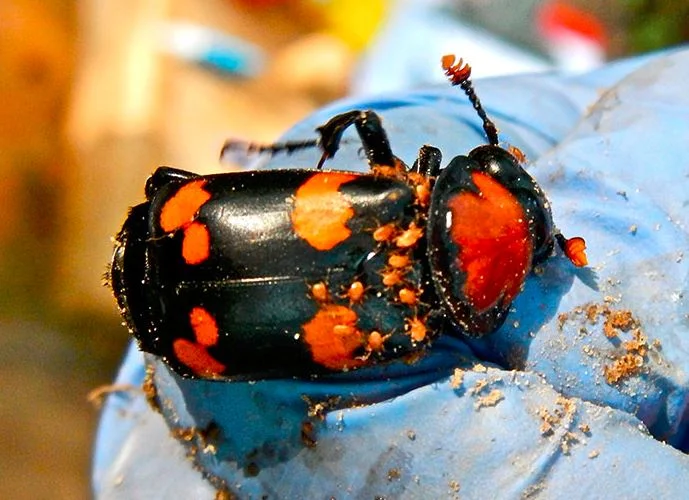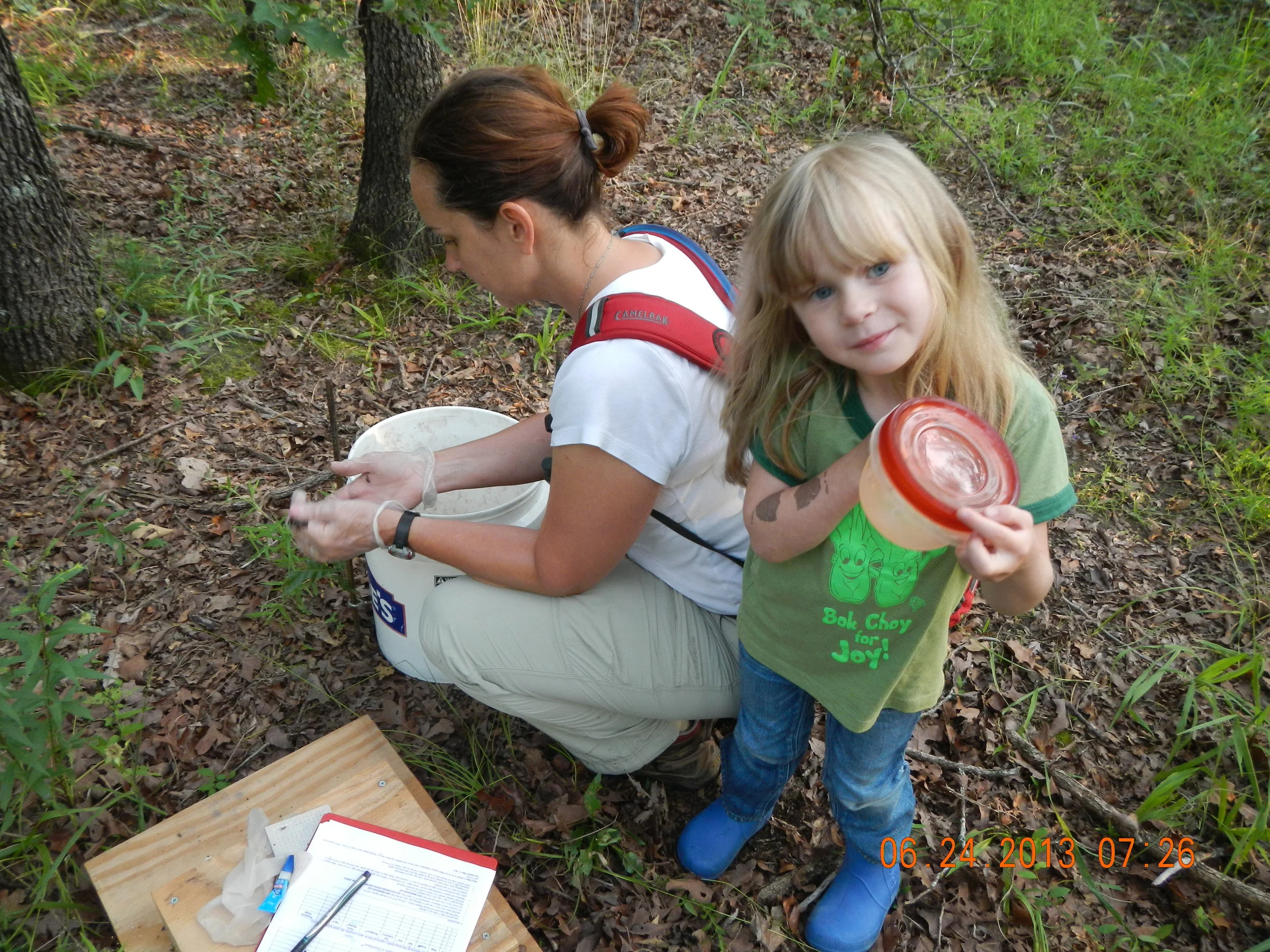BEETLE PLANES
Did you notice the “infestation” of tick-like animals on the American burying beetle in the picture? Those are Poecilochirus carabi. They are phoretic mites that catch a ride on the beetles. Literally “phoretic” is Greek for “thief bearing” and Is used to describe a commensal relationship where the mite benefits by using the beetle as a giant airplane. The term “commensal” describes a relationship where one species benefit (in this case the mite) and the other isn’t harmed (the beetle). So, why would these mites catch a ride on a beetle? Where are they going? Like most things… it boils down to food and romance. As the beetles find a carcass of suitable size (refer to THE 200th post for q review of the beetle’s life cycle) the mites crawl off and feed on any fly eggs that may have been laid on the carcass. This reduces the competition for the carcass. The mites will also take this opportunity to “date” and mate with the mites from the “partner beetle”. The mite life cycle is even coordinated with the beetles. As the new generation of beetles emerge from the soil, the new mites will hop on and the circle of life continues.


